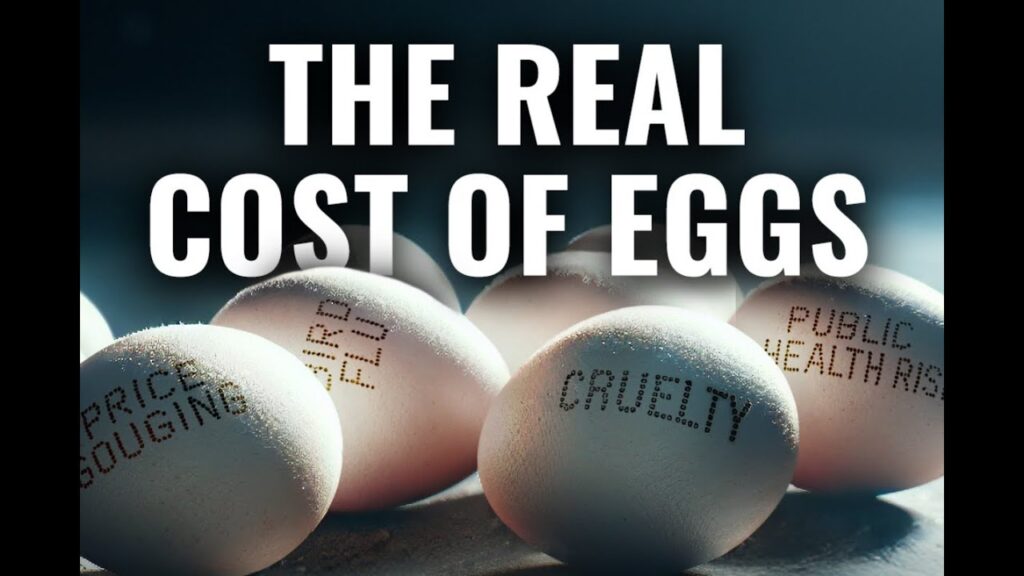As consumers around the world feel the pinch of rising grocery bills, the price of eggs has become a frequent topic of conversation. But what is often overlooked is the toll that egg production takes on the hens themselves. On World Egg Day, advocates from organizations like PETA and other animal welfare groups remind the public that the cost of eggs extends far beyond dollars and cents — it encompasses the freedom, happiness, hopes, and lives of the chickens forced into industrial production systems. For a deeper look at animal abuse in agriculture, visit Sustainable Action Now’s Abuse of Animals & Wildlife category.
Egg Prices Surge: A Perfect Storm of Crises
Today’s high egg prices are the result of several intersecting factors, including avian influenza outbreaks, inflationary pressures, and a growing demand for specialty eggs such as cage-free and organic varieties. While prices have slightly moderated since their peak in early 2025, they remain significantly above historical averages.
Avian Influenza: The Primary Driver
The highly pathogenic H5N1 avian influenza — commonly known as bird flu — has caused unprecedented disruption in the egg industry. When the virus is detected on a farm, standard protocol mandates the culling of the entire flock to prevent the disease from spreading. In the first half of 2025 alone, over 36 million egg-laying hens were lost in the United States. This massive loss has tightened the national supply, driving prices upward as demand has remained steady.
Restocking flocks is not instantaneous. Farms must raise new hens to maturity before they can resume full production, a process that takes several months, ensuring that the effects of the outbreak continue to ripple through the market.
Inflation and Rising Production Costs
Beyond the avian influenza crisis, farmers face rising costs for feed, fuel, labor, and packaging. These expenses are inevitably passed on to consumers, compounding the price increases caused by bird flu. The combined effect of disease and inflation has created an environment where eggs are more expensive than they have been in decades, leaving many shoppers frustrated and questioning the fairness of pricing.
Consumer Preferences and Specialty Eggs
The rising demand for cage-free and other specialty eggs has also contributed to the increase in prices. Ten states now require eggs sold in stores to be cage-free, which can exacerbate regional shortages when bird flu outbreaks affect cage-free flocks. Additionally, cage-free production costs more to operate than traditional egg facilities, which further drives up the price consumers pay.
While many of these shifts are motivated by a desire for more humane treatment of hens, they also reveal the complex dynamics between animal welfare, industry economics, and consumer behavior.
Corporate Profits Amid Crisis
Some animal welfare advocates and watchdog groups have criticized large egg producers for capitalizing on the crisis to boost profits beyond what is necessary to cover costs. For example, Cal-Maine Foods, the largest egg producer in the U.S., reported profits more than tripling in a recent quarter, even as millions of hens were culled and egg prices soared.
These developments have attracted the attention of regulators. The U.S. Department of Justice has launched an antitrust investigation into the pricing practices of some of the country’s largest egg producers, seeking to determine whether the spikes in costs are justified by market conditions or artificially inflated for profit.
The Hidden Cost: Animal Welfare
While consumers may focus on rising grocery bills, the ethical implications of egg production are equally pressing.
Hens in industrial egg farms often live cramped, barren lives, with little room to move, engage in natural behaviors, or experience basic freedoms.
The systematic culling of millions of birds during outbreaks underscores the vulnerability of these animals, whose lives are treated as disposable within the industry.
World Egg Day serves as a poignant reminder that while eggs are a common dietary staple, the cost to animals is immense.
Advocates argue that consumers can make a difference by choosing alternatives, supporting plant-based diets, or demanding higher welfare standards for the animals involved.
A Call to Action
The current egg crisis, marked by soaring prices, disease outbreaks, and corporate profiteering, is also an opportunity to reflect on broader ethical considerations. It encourages us to ask: What is the true cost of our food, and how can we align our consumption with compassion and sustainability?
Organizations like PETA, In Defense of Animals, and other rescue networks are leading the charge in highlighting these issues, urging public awareness and action. By supporting initiatives focused on humane treatment of farm animals and sustainable agriculture, individuals can help drive meaningful change in the industry.
For more information on how to get involved and help protect animals from abuse in agricultural systems, explore Sustainable Action Now’s Abuse of Animals & Wildlife category. Every choice — from what we eat to the brands we support — shapes the future of these animals and the sustainability of our food systems.
The story of rising egg prices is not just an economic issue; it’s a wake-up call to the public about the hidden suffering behind everyday products, and a reminder that true sustainability must include compassion for all living beings.


